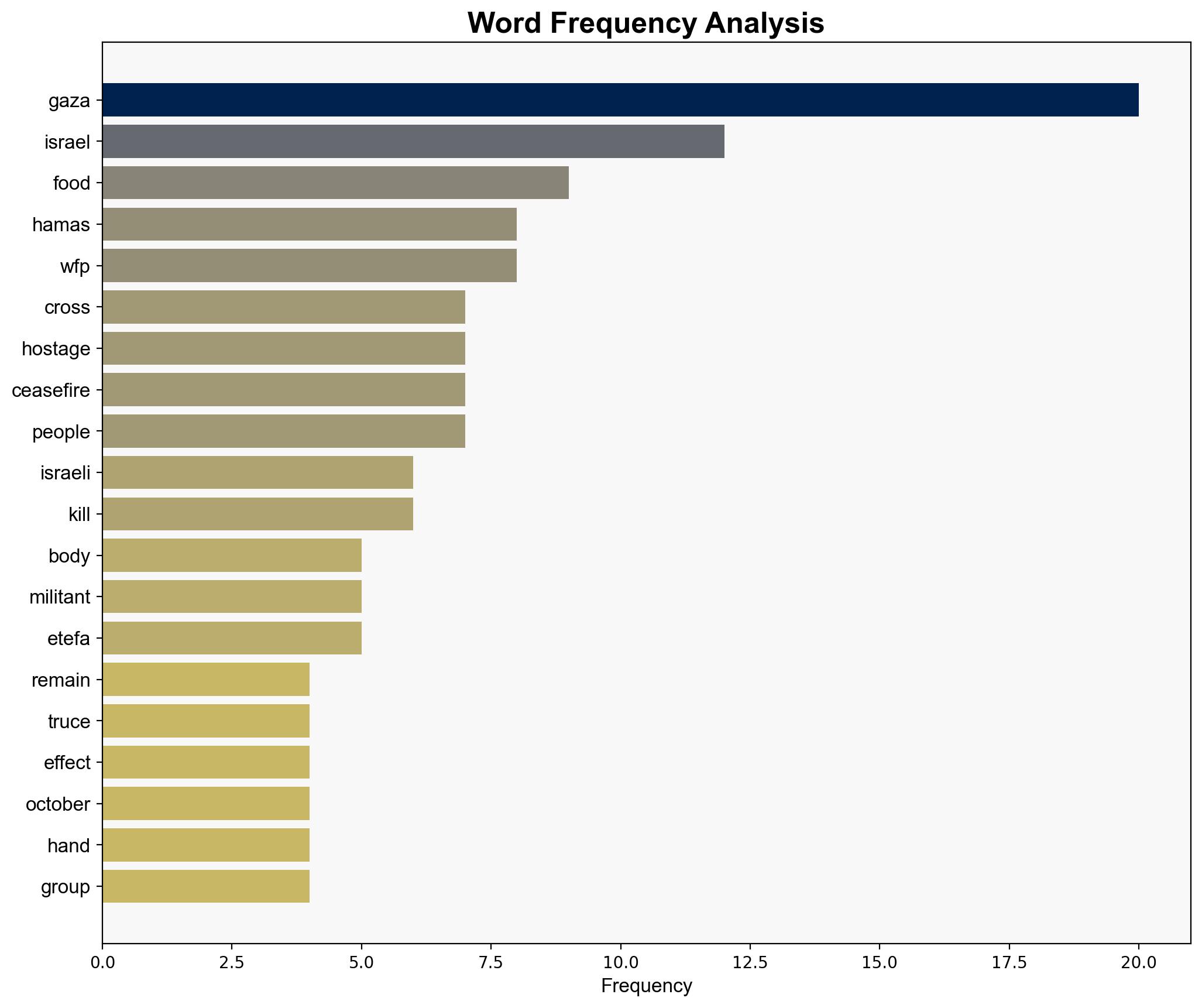Hamas says body of Israeli soldier hostage found in Gaza – RTE
Published on: 2025-11-04
Intelligence Report: Hamas says body of Israeli soldier hostage found in Gaza – RTE
1. BLUF (Bottom Line Up Front)
The most supported hypothesis is that the return of the Israeli soldier’s body is part of a negotiated ceasefire agreement between Israel and Hamas, aimed at de-escalating tensions. Confidence in this hypothesis is moderate, given the complexities and potential for misinformation in such high-stakes negotiations. Recommended action includes continued diplomatic engagement to ensure the ceasefire holds and to facilitate further humanitarian aid into Gaza.
2. Competing Hypotheses
1. **Hypothesis A**: The return of the soldier’s body is a genuine gesture by Hamas to comply with the ceasefire terms, indicating a willingness to de-escalate and potentially engage in further negotiations.
2. **Hypothesis B**: The return is a strategic move by Hamas to gain international sympathy and leverage, while potentially concealing ongoing military preparations or other strategic objectives.
Using the Analysis of Competing Hypotheses (ACH) 2.0, Hypothesis A is better supported by the context of the ceasefire and the involvement of international mediators like the Red Cross. However, the lack of transparency and historical precedent for strategic deception by Hamas lends some credence to Hypothesis B.
3. Key Assumptions and Red Flags
– **Assumptions**: It is assumed that all parties are acting in good faith to uphold the ceasefire. There is also an assumption that the body returned is indeed that of the Israeli soldier, as claimed.
– **Red Flags**: The potential for misinformation or misidentification of the body. The slow pace of the return process could indicate logistical challenges or deliberate stalling.
– **Blind Spots**: Limited visibility into Hamas’s internal decision-making processes and the full scope of their strategic objectives.
4. Implications and Strategic Risks
– **De-escalation Potential**: Successful compliance with the ceasefire terms could lead to a more stable security environment and open channels for further negotiations.
– **Escalation Risks**: If the ceasefire is perceived as a cover for rearmament or other strategic maneuvers by either party, it could lead to renewed hostilities.
– **Humanitarian Concerns**: Continued access for humanitarian aid is critical to prevent further deterioration of conditions in Gaza.
5. Recommendations and Outlook
- **Mitigation**: Strengthen international monitoring of the ceasefire terms to ensure compliance and transparency.
- **Exploitation**: Leverage the current diplomatic engagement to push for broader peace talks.
- **Scenario Projections**:
– **Best Case**: The ceasefire holds, leading to a long-term reduction in hostilities and improved humanitarian conditions.
– **Worst Case**: Breakdown of the ceasefire, leading to renewed conflict and further humanitarian crises.
– **Most Likely**: A fragile peace with intermittent violations, requiring sustained diplomatic and humanitarian efforts.
6. Key Individuals and Entities
– **Hamas Spokesman**: Hazem Qassem
– **Israeli Prime Minister’s Office**: Involved in the ceasefire negotiation and implementation.
– **Red Cross**: Facilitator in the return of the body and ongoing humanitarian efforts.
7. Thematic Tags
national security threats, counter-terrorism, regional focus, humanitarian aid, ceasefire negotiations




